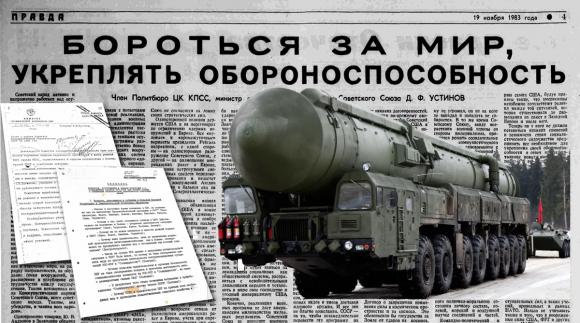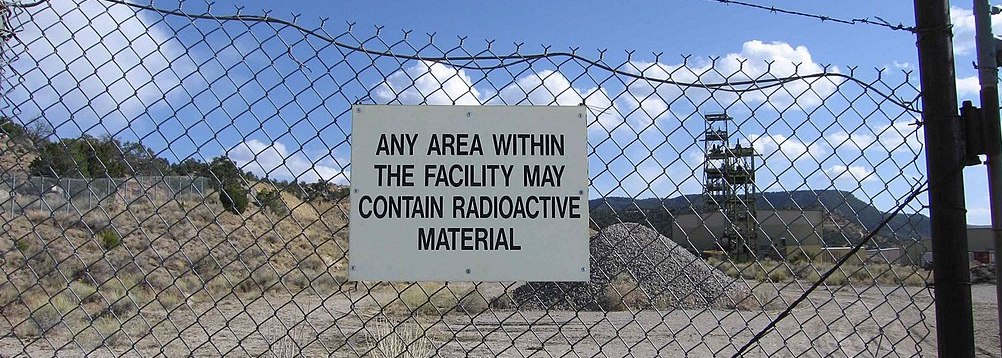2023 News Articles – All Posts
Nothing Found
It seems we can’t find what you’re looking for. Perhaps searching can help.
2022 Select Highlighted Press Items
Nuclear Modernization is the ’Absolute Minimum,’ STRATCOM Commander Says | March 8, 2022
US tested hypersonic missile in mid-March but kept it quiet to avoid escalating tensions with Russia | April 4, 2022
Putin’s Nuclear Threats Are a Wake-Up Call for the World | March 15, 2022
Intelligence report determines that Russia's WMD threats will grow as losses mount in Ukraine | March 19, 2022
China and the United States: It’s a Cold War, but don’t panic | March 10, 2022
Russian military doctrine calls a limited nuclear strike “de-escalation.” Here’s why. | March 8, 2022
North Korea says it will strike with nuclear weapons if South attacks | April 4, 2022
Flying Under The Radar: A Missile Accident in South Asia | April 4, 2022
2022 News Articles
Santa Fe councilors question LANL coalition membership
BY: Kyle Land /
What’s the actual benefit to the city?
That was the question Santa Fe city councilors debated Monday as they considered the city’s membership in the Regional Coalition of LANL Communities.
At the center of it all was a revised Joint Powers Agreement for the coalition, which officials hope will solve some of the group’s long-standing organizational issues.
Panel weighs benefits to LANL communities coalition
BY: Sean P. Thomas sthomas@sfnewmexican.com / Updated
Santa Fe City Councilor Renee Villarreal renewed her concerns Monday about the city’s involvement in a joint powers agreement with the Regional Coalition of LANL Communities.
During a Finance Committee meeting Monday, Villarreal said she has yet to understand how the city benefits from the agreement, which calls for a $10,000 contribution.
“Why is it important we are part of this coalition?” she asked. “It’s never been clear to me about the benefits and how it holds up the values that we care about in Santa Fe.”
The city is one of nine cities, counties, towns and tribal governments that make up the regional coalition, which was established in 2011 to give communities in Northern New Mexico a more official say in decision-making pertaining to job development and cleanup at Los Alamos National Laboratory.
But controversy emerged in recent years over the organization’s spending practices.
How Green Berets prepared to carry ‘backpack nukes’ on top-secret one-way missions during the Cold War
“During training, the instructors had told us we had about 30 minutes to clear the blast radius of the device. We never really believed that,” a retired Special Forces operator who served on a Green Light Team told Insider.
BY: Stavros Atlamazoglou / March 1st, 2021 businessinsider.com
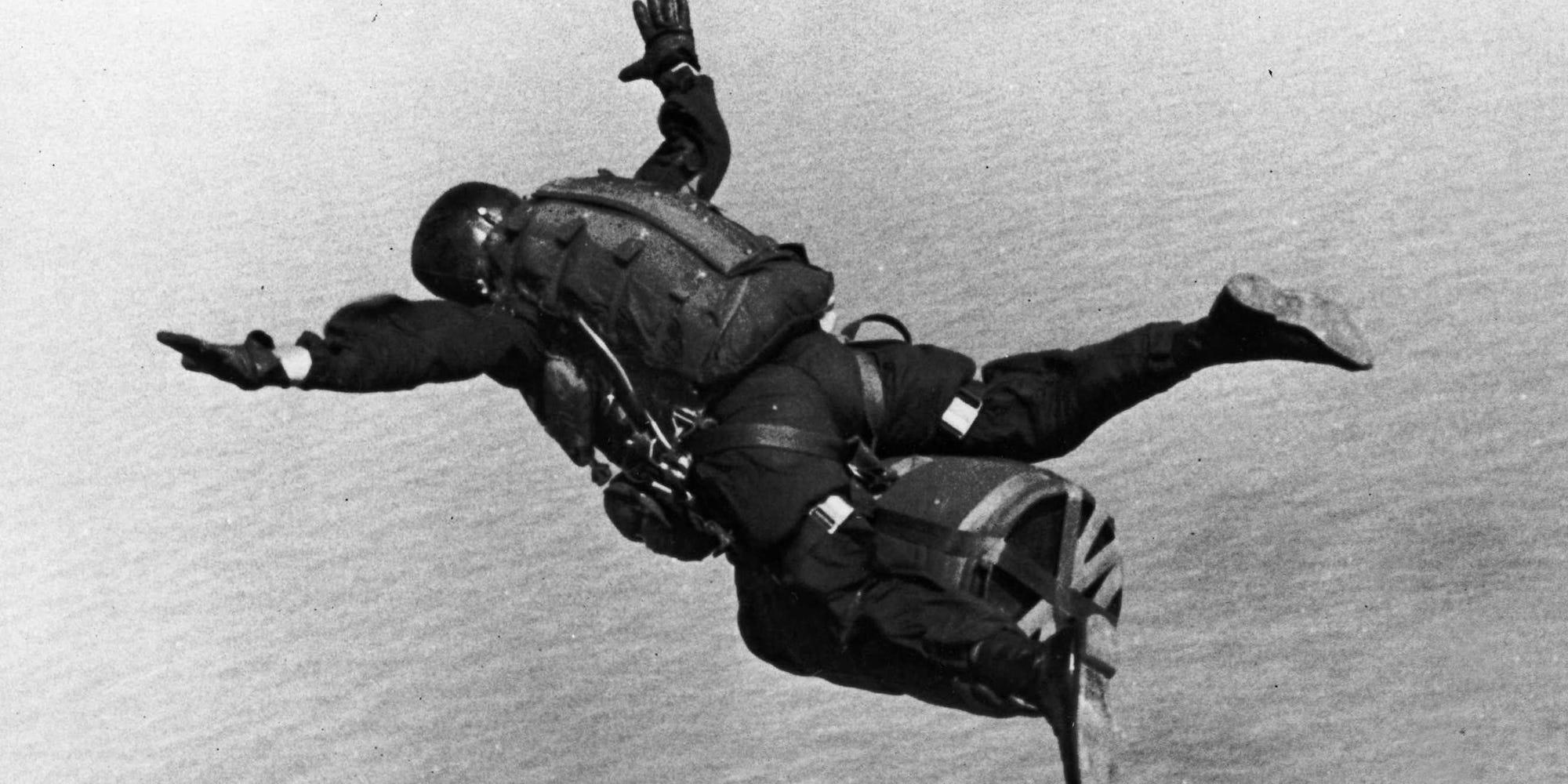
- In the Cold War, strategists wanted nuclear weapons they could use without sparking a nuclear war.
- That led to the development of tactical nuclear weapons for use against targets.
- Teams of Green Berets trained to carry those nukes to their targets and saw it as a one-way mission.
Throughout the Cold War, as the nuclear arms race became more frantic, a nuclear confrontation between the US and the Soviet Union remained a major concern.
With intercontinental ballistic missiles, submarine-launched missiles, and air-dropped bombs, both countries had several options when it came to nuclear warfare.
But the atomic bombings of Hiroshima and Nagasaki in the closing days of World War II made clear the destructive capability of nuclear arms and the danger of a full-blown nuclear conflict.
As a result, US strategists sought ways to use nuclear weapons without triggering an all-out nuclear war.
Continue reading
New Mexico alleges in court filing Los Alamos National Lab failed to clean up nuclear waste
“I’m glad that NMED went to court. If LANL is serious, they should not be spending lots of federal time and resources and lawyers to fight this…They should be trying to see what they can do to come to an agreement with NMED.” — Don Hancock, director of the nuclear waste program at the Southwest Research and Information Center
By: Adrian Hedden Carlsbad Current-Argus / March 2nd, 2021 currentargus.com
An alleged failure to clean up hazardous and radioactive waste at Los Alamos National Laboratory (LANL) led the New Mexico Environment Department (NMED) to take the U.S. Department of Energy (DOE) to court in hopes of seeing the DOE address its concerns.
In a complaint filed in the First Judicial District Court in Santa Fe County, NMED alleged the DOE displayed a “pattern” of failing to meet deadlines and benchmarks for hazardous waste clean-up at the federal nuclear facility in northern New Mexico.
NMED sought to terminate a 2016 consent order, enacted during the past administration, citing a lack of adequate targets and progress in cleaning up waste at the facility.
Gorbachev’s Greatest Hits
Mikhail Sergeyevich Gorbachev did more for global nuclear disarmament than any other person in history
Gorbachev made history, then freed history by opening his documents
Briefing Book #746 | Edited by Svetlana Savranskaya & Thomas Blanton / March 2nd, 2021 nsarchive.gwu.edu
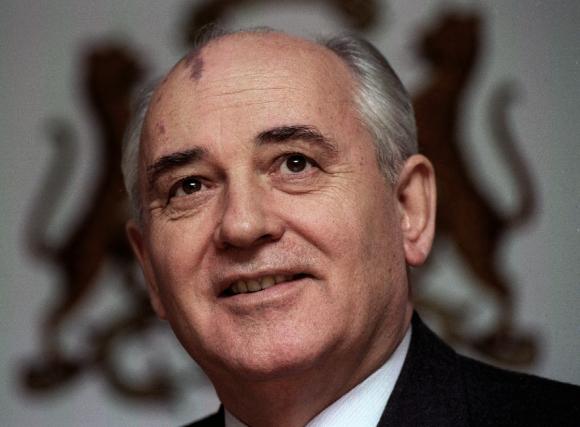
Washington, D.C., March 2, 2021 – The first and only president of the Soviet Union, Mikhail Sergeyevich Gorbachev, is turning 90 years old today in Moscow. On the occasion of his anniversary, the National Security Archive has compiled a collection of postings called “Gorbachev’s Greatest Hits.” These documents help illuminate the story of the end of the Cold War, political reform of the Soviet system, and the vision of a world built on universal human values.
This compendium, accompanied by a collection of Russian-language documents on the Archive’s Russia Page, is intended to encourage scholars and others to revisit and study those miraculous years in the late 1980s and early 1990s when the global confrontation stopped, walls fell, peoples found freedom, and Europe was seen as a common home. Though not for long.
Modeling Software Once Led Us to the Precipice of Nuclear War. What Will AI Do?
The Pentagon must heed the lessons of RYAN and Able Archer amid its artificial-intelligence aspirations.
By: Steve Blank Defense One / March 1st, 2021 defenseone.com

In 1983, the world’s superpowers drew near to accidental nuclear war, largely because the Soviet Union relied on software to make predictions that were based on false assumptions. Today, as the Pentagon moves to infuse artificial-intelligence tools into just about every aspect of its workings, it’s worth remembering the lessons of RYAN and Able Archer.
Two years earlier, the Soviet Union had deployed a software program dubbed RYAN, for Raketno Yadernoye Napadenie, or sudden nuclear missile attack. Massive for its time, RYAN sought to compute the relative power of the two superpowers by modeling 40,000 military, political, and economic factors, including 292 “indicators” reported from agents (spies) abroad. It was run by the KGB, which employed more than 200 people just to input the data.
New Mexico is right to hold Energy’s feet to the fire
Santa Fe New Mexican | Our View, March 1, 2021
New Mexico is getting tougher with Los Alamos National Laboratory when it comes to waste cleanup. That’s good news. The state has filed suit against the U.S. Department of Energy for what it claims is the lab’s inadequate cleanup of legacy waste.
New Mexico Environment Department Takes Legal Action To Terminate Defective LANL Cleanup “Consent Order”
FOR IMMEDIATE RELEASE, February 25, 2021
The New Mexico Environment Department has announced that it is filing a lawsuit against the Department of Energy to terminate a “Consent Order” governing cleanup at the Los Alamos National Laboratory (LANL). Nuclear Watch New Mexico, which has fought against that Consent Order ever since it went into effect nearly five years ago, strongly supports and applauds NMED’s decision.
Much to its credit, in 2005 the State of New Mexico successfully compelled DOE to enter into a strong, enforceable Consent Order after years of tough negotiations and lawsuits brought against it by DOE and the University of California (then LANL’s manager). However, at the Lab’s request the anti-regulation Susanna Martinez Administration eviscerated that Consent Order with more than 150 milestone extensions.
State sues DOE over LANL cleanup
The lawsuit notes that Nuclear Watch New Mexico previously filed a lawsuit against the DOE over its non-compliance with the 2016 Consent Order.
Jay Coghlan, executive director of Nuclear Watch New Mexico, said in a statement that “What New Mexicans really deserve (is) to have needed cleanup drive funding instead of the budget that DOE wants driving cleanup. We strongly salute the Environment Department for taking legal action against DOE’s scheme of expanding dirty nuclear weapons production over cleanup.”
By: T.S. LAST / JOURNAL NORTH / February 25th, 2021 at 11:45pm Copyright © 2021 Albuquerque Journal abqjournal.com
SANTA FE – The state Environment Department has lost patience with the U.S. Department of Energy over what it says is a “continuing pattern of delay and noncompliance” with the cleanup of hazardous legacy waste at Los Alamos National Laboratory, posing a health risk to people in surrounding communities.
After a dispute resolution process broke down, the New Mexico Environment Department late Wednesday filed a civil lawsuit against the DOE in 1st Judicial District Court in Santa Fe. It claims that DOE has failed to meet objectives identified in compliance orders in 2005 and 2016 and has dragged its feet in cleaning up contamination left behind from decades of bomb-making and nuclear research.
It asks that a court-supervised process be conducted to resolve the issues.
“We’re a state agency, and our patience is long,” Environment Secretary James Kenney said in a phone interview. “But our patience runs out quickly when there’s an inability to meet promises.”
New Mexico sues feds over LANL cleanup, plans tougher oversight
Jay Coghlan, executive director of nonprofit Nuclear Watch New Mexico, agreed that hard deadlines are crucial in making real headway on cleanup.
“The main thing we would want is to have cleanup drive funding instead of a budget that [the Energy Department] wants driving cleanup,” Coghlan said.
By: Scott Wyland santafenewmexican.com | Feb 25, 2021
Worker moves drums of transuranic (TRU) waste at a staging area. By filing a lawsuit against the U.S. Department of Energy, state regulators now hope to dissolve the existing consent order regulating waste cleanup at the lab and impose tougher rules for disposing of transuranic waste. Credit: Richard RobinsonState regulators are suing the U.S. Department of Energy for what they say is a failure to adequately clean up legacy waste at Los Alamos National Laboratory, and they will impose tougher rules for disposing of waste generated at the lab during the Cold War and Manhattan Project.
Critics have bashed the 2016 agreement for waste cleanup — known as a consent order — that was crafted under Republican Gov. Susana Martinez, saying it weakened the original 2005 order by eliminating real deadlines and imposing few penalties for slow or deficient work.
The lawsuit, filed in state District Court, seeks to cancel the consent order, fine the Energy Department about $330,000 for not meeting its cleanup obligations and have the court oversee mediation between the two parties for a new waste agreement.
New Mexico Environment Department’s (NMED) virtual Los Alamos community engagement meeting Thursday, Feb. 25, 2021
Fantastic News for Comprehensive Cleanup at LANL: Environment Department files complaint against U.S. Department of Energy to speed clean-up of legacy waste, terminate 2016 Consent Order at Los Alamos National Laboratory
Watch the full length recording here: https://www.facebook.com/NukeWatch.NM/videos/812249586045073
Ex-SCANA CEO pleads guilty to fraud in SC nuclear fiasco: ‘I’m sorry it’s come to this’
Tom Clements, an environmental activist who criticized the nuclear project even before its abandonment, noticed and shouted a question as the former SCANA executive walked past. “Mr. Marsh, are you going to apologize to the people of South Carolina for this nuclear nightmare?”
By Avery G. Wilks & Conor Hughes | postandcourier.com February 24, 2021 – updated March 5, 2021
COLUMBIA — Former SCANA Corp. Chief Executive Officer Kevin Marsh will spend at least two years in prison and pay back at least $5 million for defrauding electric ratepayers in South Carolina’s $9 billion nuclear power fiasco, according to a plea deal that was presented to a federal judge Feb. 24.
The 65-year-old Marsh appeared in court for the first time to plead guilty to fraud charges and formally accept responsibility for his role in the failed, decade-long expansion of SCANA’s V.C. Summer nuclear power plant in Fairfield County. Marsh had to surrender his passport at the courthouse but was released without having to post money for bond.
Once one of South Carolina’s top businessmen, Marsh has spent the past six months as a criminal informant and will continue to be a key witness for state and federal prosecutors who continue to probe the V.C. Summer project’s failure. He faces up to 10 years in prison if he does not fully cooperate with that investigation, according to the new terms of his plea deal.
“Justice has been served,” U.S. Attorney for South Carolina Peter McCoy said after the hearing. “For years, institutions and individuals have abused the public trust with little to no accountability. This includes corporations that have increased profits at the expense of their customers. Oftentimes, it’s assumed that these executives will avoid any oversight because of who they are and where they’ve worked.”
Marsh’s first day in court was a long one, a product of a three-year investigation by the FBI, U.S. Attorney’s Office for South Carolina, State Law Enforcement Division and S.C. Attorney General’s Office that brought both state and federal fraud charges against him.
That Time an Airman Accidentally Prevented a Nuclear Apocalypse
Perroots wrote, “it is not certain that we looked hard enough or broadly enough for information…For Western collectors the context was peacetime without even the most basic ripples of crisis. For the Soviets, however, the view may have looked quite different.”
In a 1989 memo, CIA officials admitted that Perroots’ letter surfaced “a long standing warning problem, i.e. the need for the intelligence community in Washington to provide more timely, discriminating and accurate warning in support of the theater commander.”
By: DAVID ROZA | taskandpurpose.com FEBRUARY 23, 2021
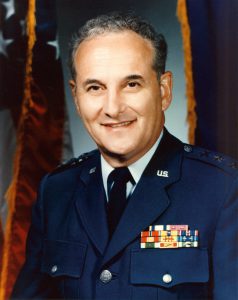
Lt. Gen. Leonard Perroots was on the intelligence desk for U.S. Air Forces Europe on Nov. 5, 1983, when he heard that Soviet Air Forces in East Germany were on high alert and being loaded with munitions. The Air Force officer called his boss, Gen. Billy Minter, who asked Perroots if they should load up for war in response.
“I said that we would carefully watch the situation,” Perroots later wrote in a letter to senior U.S. intelligence officials, “but there was insufficient evidence to justify increasing our real alert posture.”
Little did Perroots know, he had just played a crucial role in averting what could have resulted in armageddon, had the nuclear-capable war machines of both the North Atlantic Treaty Organization and the Soviet Union continued to spin up. Experts later compared the incident, now known as Able Archer 83, to the 1962 Cuban missile crisis in terms of how close both sides came to declaring war.
No Growth, No Big Cuts Likely For First Biden Defense Budget
The full budget, set to be released on May 3, should spark heated debate in Congress between an emboldened progressive wing of the Democratic party looking to cut defense budgets, and Republicans and conservative Democrats who say spending must increase to stay ahead of the Chinese military buildup.
“You can’t obtain serious and durable cuts in Pentagon spending without an equally serious rethinking of our strategic objectives…Resources constraints should cause us to rethink our strategic objectives, but the Biden team seems unwilling to do that.” – Christopher Preble, co-director of the New American Engagement Initiative at the Atlantic Council.
By: PAUL MCLEARY / breakingdefense.org
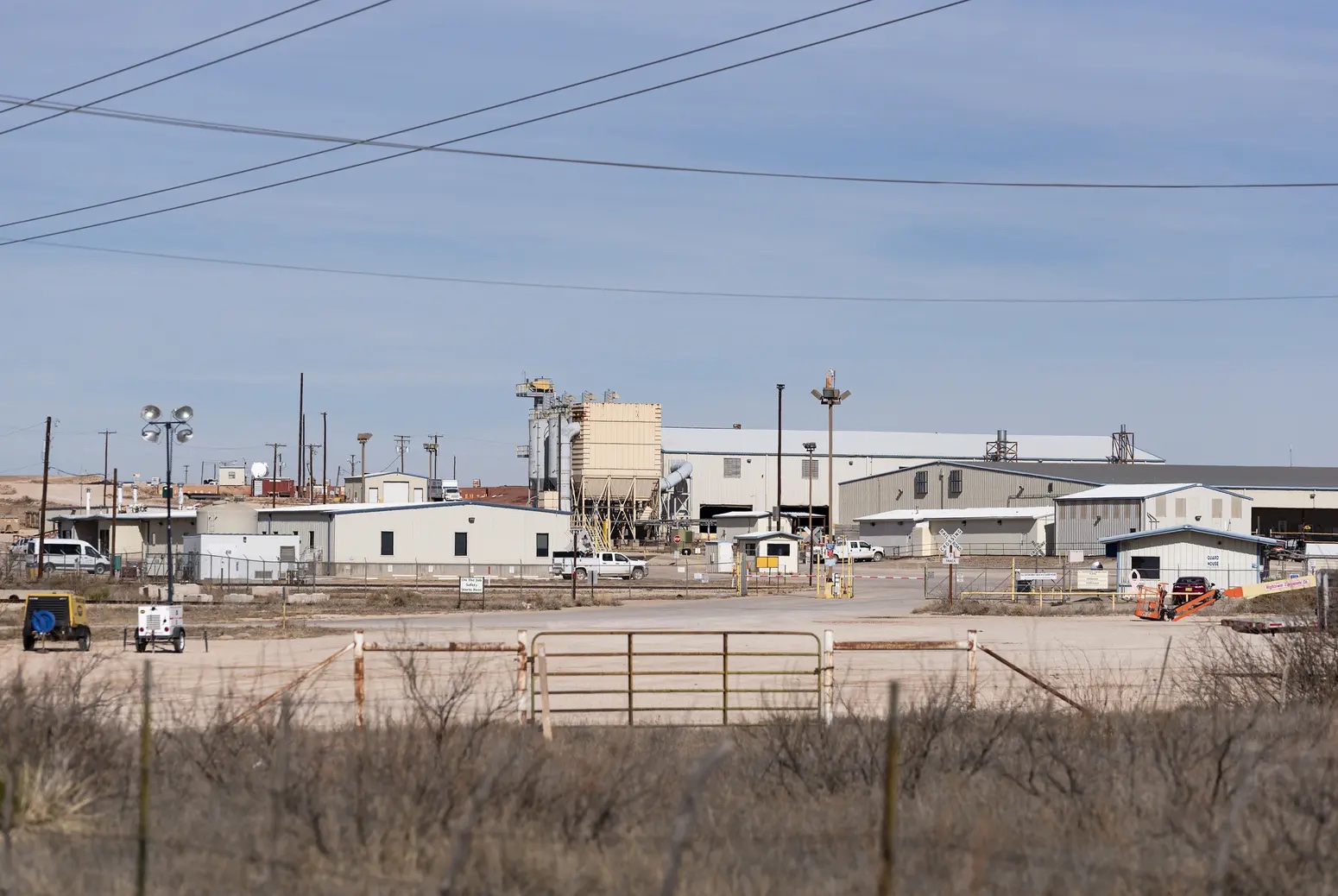
WASHINGTON: Early planning indicates that the Biden administration’s first defense budget might only match last year’s request, marking the second year in a row that the budget request will not keep up with inflation according to several sources familiar with the guidance.
If that planning holds up, the top line for the Pentagon’s 2022 budget will likely come in around the $696 billion the department received in it’s base funding 2021, which was itself just $2.6 billion more than the enacted 2020 budget.
The full budget is now scheduled to be released on May 3. The Biden administration’s first DoD funding request will be delivered to a Congress already split between an emboldened progressive wing of the Democratic party looking to cut defense budgets, and Republicans and conservative Democrats who say spending must rise significantly in order to stay ahead of the Chinese military buildup.
Progressives Face Tough Road in Bid to Cut Biden Defense Budget
⋅ ‘Legacy’ weapons programs to come under review, Reed says
⋅ Critics eye Northrop’s intercontinental ballistic missile
By: Roxana Tiron & Anthony Capaccio / bloomberg.com
The high price tag of taming the coronavirus pandemic and pressure from some Democrats to significantly reduce the Pentagon’s $700 billion budget probably won’t force arbitrary national security budget cuts, the Senate Armed Services Committee’s new chairman said.
“Arbitrary reductions would not be the right way to go,” Senator Jack Reed, the Rhode Island Democrat who leads the panel, said in an interview Monday. Congress will weigh President Joe Biden’s first budget request and review the military services’ proposals to see if they cut unnecessary, so-called “legacy” weapons programs and facilities, Reed said.
Reed’s position is significant because Biden’s election elevated a narrative within the Democratic Party that the president will be under enormous pressure from progressives to slash defense spending. National security makes up about half of the federal government’s discretionary budget.
Nuclear Weapons — They’re Illegal
“Remember that when your congressional members pitch expanding nuclear weapons production as jobs programs; you can respond that they are illegal. Tell them they should show visionary leadership and moral courage by helping to create cleanup and green energy jobs instead.”
By: Jay Coghlan / Santa Fe New Mexican
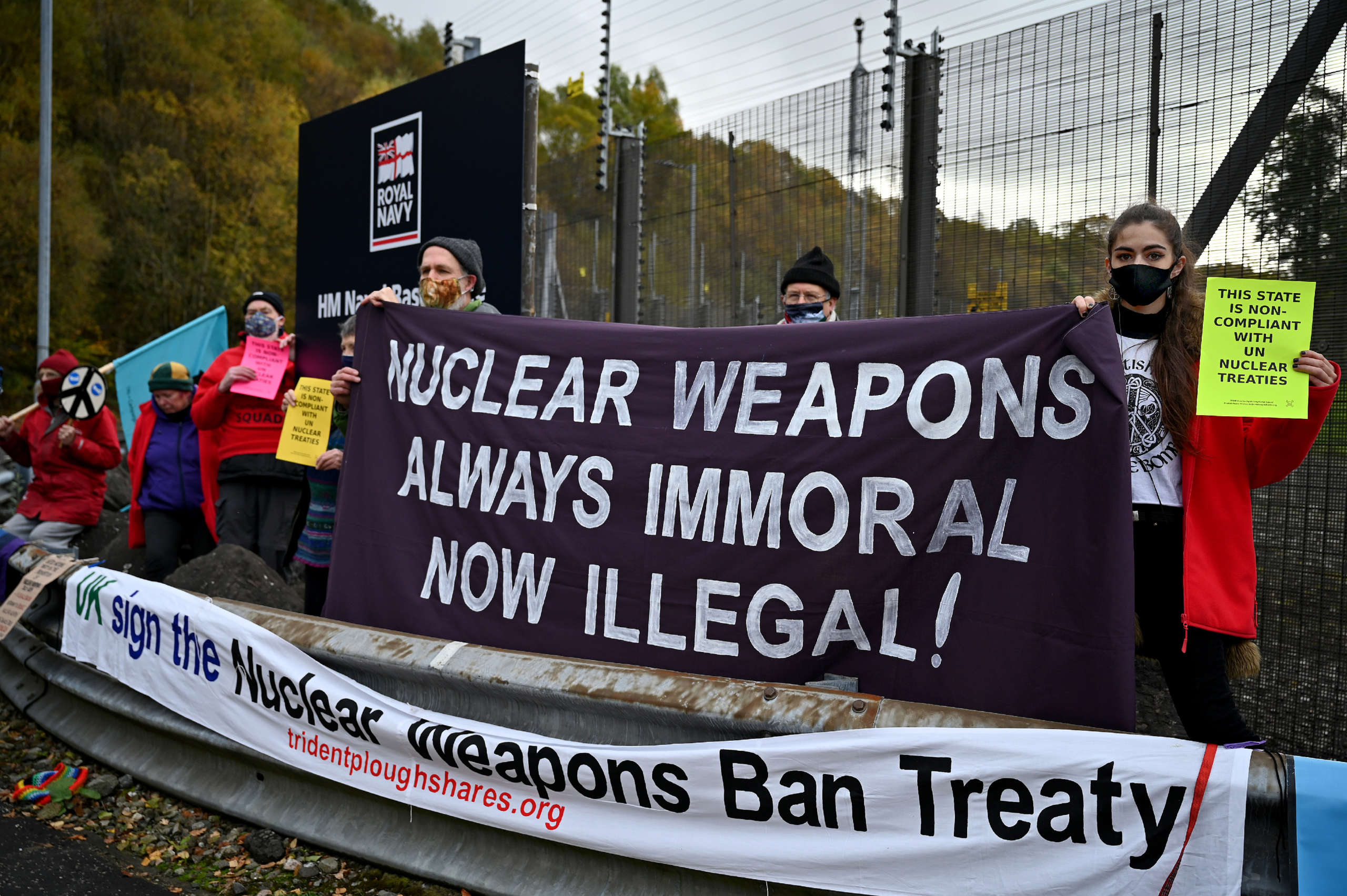
Jan. 22 will go down in history as the day when the tide turned against nuclear weapons. That was the day when the Treaty on the Prohibition of Nuclear Weapons went into effect, signed by 122 countries.
It specifically prohibits nations from developing, testing, using or threatening to use nuclear weapons and assisting others in doing so. It reinforces existing international law obligating all states not to test, use or threaten to use nuclear weapons.
What immediate impact will it have here, given that the Los Alamos National Laboratory is the birthplace of nuclear weapons and now sole producer of plutonium pit triggers for the expanding U.S. stockpile? The brutally honest answer is no impact, not immediately.
But think about it. Nuclear weapons are now internationally illegal, just as horrendous chemical and biological weapons of mass destruction have long been. But nuclear weapons are the worst WMDs, potentially killing millions more while causing radioactive fallout and famine-inducing nuclear winter. Ask your New Mexican congressional members to explain why nuclear weapons shouldn’t be internationally banned just like chemical and biological WMDs, all of which cause agonizing, indiscriminate suffering and death.
Semis Hauling Millions of Radioactive Loads Across the Country
“…Charles is concerned, not only with the radiation he and other drivers may have been exposed to, but with the fallout from the radioactive rigs that continue to travel our nation’s highways.”

CINCINNATI (WKRC) – Each year, millions of radioactive loads are shipped across the country, many on trucks that travel right beside you on our highways.
The federal government says the shipments are safe, but some of those who handle and haul the toxic material disagree.
In this exclusive Local 12 Investigation, Chief Investigative Reporter Duane Pohlman interviews two of those workers.
PLOUGHSHARES FUND: JAY COGHLAN – MY FIRST GRANT: NUCLEAR WATCH NEW MEXICO
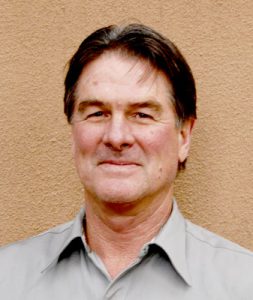
Jay Coghlan is the executive director of Nuclear Watch New Mexico, a nonprofit organization founded by veteran anti-nuclear activists that seeks to promote environmental protection at regional nuclear facilities, mission diversification away from nuclear weapons programs, greater accountability and cleanup in the nationwide nuclear weapons complex, and consistent US leadership toward a world free of nuclear weapons. Jay recently spoke with us on the initial reaction to Nuclear Watch New Mexico’s first grant from Ploughshares Fund, what has been accomplished since their founding in 1999, and what you can do to continue supporting their work.
What was your reaction when you found out that you received a grant?
My initial reaction was one of surprise. I was new to the work and didn’t really feel worthy of the trust that the Ploughshares Fund had put into me. Second came elation and the realization that I could become professional and devote myself to the work full time, which I view as a necessity. Third came a strong feeling of gratitude, which I still feel 28 years later because of Ploughshares’ incredible steadfast and consistent support.
What are you most proud of accomplishing in this field?
What I am most proud of is having played a central role in beating back four attempts by the US government to expand plutonium pit bomb core production, which has been the chokepoint of resumed US industrial-scale nuclear weapons production ever since a 1989 FBI raid investigating environmental crimes shut down the Rocky Flats Plant near Denver. This work included convincing a New Mexico senator to require an independent plutonium pit lifetime study which in 2006 concluded that pits last at least a century. Shortly thereafter, in conjunction with a restrained budget environment, Congress deleted funding for a new-design nuclear weapon called the Reliable Replacement Warhead and related expanded plutonium pit production.
Newly Released Documents Shed Light on 1983 Nuclear War Scare with Soviets
“On a hair trigger”: The Soviet Union put warplanes loaded with nuclear bombs on 24-hour alert during a 1983 war scare that was one of the most dangerous moments of the Cold War.
EPA awards 3 companies $220M for cleanup of abandoned uranium mines on Navajo Nation
“We are very pleased that Native American-owned firms are being considered and selected for the remediation of uranium mine sites,” Valinda Shirley, executive director of the Navajo EPA Shirley said in a statement. “The award of these contracts propels the cleanup of our priority mine sites across the Navajo Nation.”
SALT LAKE CITY (KUTV) — The U.S. Environmental Protection Agency has awarded three contracts for the clean-up of more than 50 abandoned uranium mine sites on the Navajo Nation, worth up to $220 million over the next five years.
The majority of the funding comes from the $1 billion Tronox settlement in 2015. According to the EPA, work is scheduled to begin later this year following the completion of assessments in coordination with the Navajo Nation Environmental Protection Agency. A news release stated that the cleanup sites are in New Mexico’s Grants Mining District and in 10 chapters located on the Navajo Nation, which was the primary focus of uranium extraction and production activities for several decades beginning in the 1950s.
The Navajo Area Abandoned Mine Remedial Construction and Services Contracts were awarded to:
- Red Rock Remediation Joint Venture,
- Environmental Quality Management Inc.,
- Arrowhead Contracting Inc.
In addition, the U.S. EPA and the Navajo Nation have secured funding agreements, through enforcement agreements and other legal settlements, for the assessment and clean-up of approximately 200 abandoned uranium mine sites on the Navajo Nation, the news release stated.
Navajo Nation President Jonathan Nez said in a prepared statement:
The Navajo people have endured decades of radiation exposure and contamination caused by uranium mining and production that has taken the lives of many former miners and downwinders and continues to impact the health of our children. We appreciate the U.S. EPA’s efforts to create incentives and opportunities for Navajo Nation residents by working with the contracted companies to develop training programs for our people and businesses to promote professional growth related to abandoned mine clean-ups. We strongly encourage these companies to create more opportunities for Navajo businesses to receive sub-contracts for the work related to assessments and clean-up efforts. We have many Navajo-owned entrepreneurs and businesses that have the expertise and experience to help clean-up our communities.
Each of the companies will develop training programs for Navajo individuals and businesses to promote professional growth in areas related to the AMRCS contract. Workforce training that could be offered by the contractors may cover radiological contamination, health and safety, construction and road building.
READ THE ENTIRE PRESS RELEASE HERE.
LANL Looks to Reduce Risks of Volatile Waste
“Many of the drums probably have sat around for years, even decades, posing a hazard,” said Scott Kovac, research and operations director for the nonprofit Nuclear Watch New Mexico.
“It’s an example of nuclear weapons work getting the priority while cleanup and waste management is on the back burner,”
By Scott Wyland swyland@sfnewmexican.com / sfnewmexican.com
Los Alamos National Laboratory is taking steps to address the hazards posed by dozens of barrels of radioactive waste mixed with incompatible chemicals, which have the potential to explode.
The lab is responding to a report in October by the federal Defense Nuclear Facilities Safety Board, which found the lab had failed to analyze chemicals present in hundreds of containers of transuranic nuclear waste.
Incompatible chemicals could blend together and cause a container to burst, releasing a high level of radiation that would threaten workers and the public, the report said.
Groups Seek Broader Review of Nuclear Work
Federal installations face a deadline of making 80 cores per year by 2030, with the first 30 due in five years.
“Nuclear Watch New Mexico, South Carolina-based SRS Watch and California-based Tri-Valley Communities Against a Radioactive Environment sent a letter to the U.S. Energy Department last week, asking that a rigorous environmental review be done before production is ramped up at Los Alamos National Laboratory in northern New Mexico and the Savannah River Site near Aiken, South Carolina.”
By: Susan Montoya Bryan | mbtmag.com Feb 18th, 2021
ALBUQUERQUE, N.M. (AP) — Watchdog groups want the Biden administration to reconsider a decision by a U.S. agency not to conduct a more extensive environmental review related to production of the plutonium cores used in the nation’s nuclear arsenal.
The renewed request comes as federal installations in New Mexico and South Carolina face a deadline of making 80 cores per year by 2030, with the first 30 due in five years.
With jobs and billions of dollars in spending at stake, the effort to modernize the nation’s nuclear arsenal has enjoyed bipartisan support in Congress over the years, especially among New Mexico Democrats whose districts stand to benefit from the economic windfall. The Biden administration has taken swift action to reverse some policies by the Trump administration but has yet to say whether it plans to push ahead with making more plutonium cores. It does say that work is being reviewed.
Nuke groups pressing Biden administration for more pit production environmental review
Savannah River Site Watch, Nuclear Watch New Mexico and Tri-Valley CAREs, represented by the the S.C. Environmental Law Project, in early February sent a letter and supporting documents to the Department of Energy and its National Nuclear Security Administration outlining grave concerns and allegations of cut corners.
By Colin Demarest cdemarest@aikenstandard.com postandcourier.com| February 17, 2021
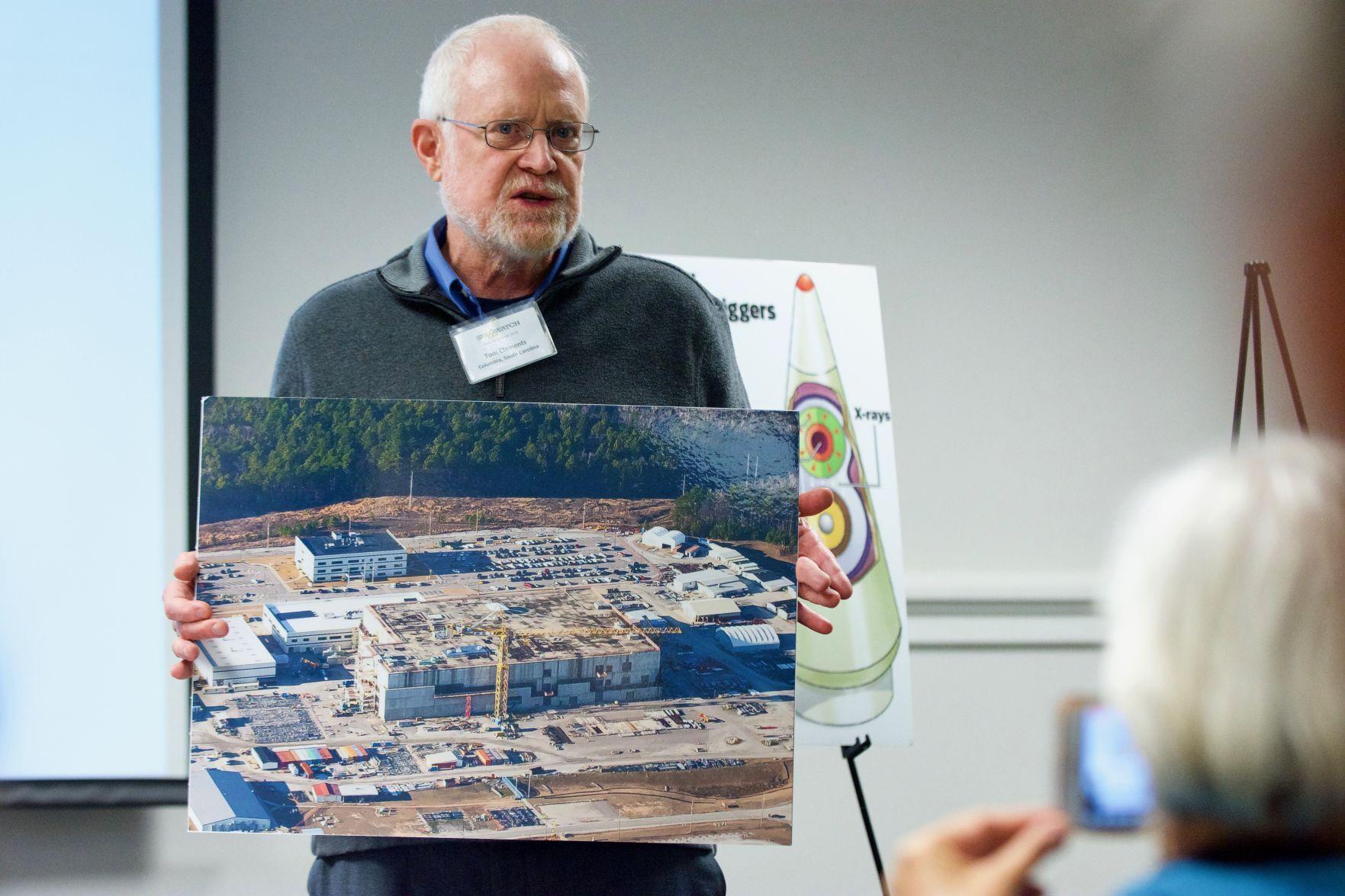
Staff photo by Colin Demarest
A coalition of nuclear watchers and nonprofits is again lobbying the federal government to conduct a more rigorous environmental review of plans to produce nuclear weapon cores in South Carolina and New Mexico, this time hoping the new administration is more amenable.
Savannah River Site Watch, Nuclear Watch New Mexico and Tri-Valley CAREs, represented by the the S.C. Environmental Law Project, in early February sent a letter and supporting documents to the Department of Energy and its National Nuclear Security Administration outlining grave concerns and allegations of cut corners.
Continue reading
Editorial: LANL’s lack of wildfire plan, action irresponsible
By Albuquerque Journal Editorial Board
Tuesday, February 16th, 2021
One would think an entity with 13 nuclear facilities that experienced two catastrophic wildfires in recent years would be taking fire prevention seriously.
After all, the 2000 Cerro Grande Fire burned about 7,500 acres of Los Alamos National Laboratory property, resulting in $331 million in damages. And that figure doesn’t include an estimated $15 million in lost productivity per week during a 15-day shutdown and recovery period.
And then there was the 2011 Las Conchas Fire. While it ultimately burned only about 1 acre of LANL land, it forced roughly 10,000 LANL employees out of their offices and out of Los Alamos for more than a week.
But according to a recent report from the Department of Energy’s Office of Inspector General, managers at LANL have not fully implemented measures designed to reduce the impact from wildland fires, including tree thinning in buffer zones below overhead power lines.
The report is so disappointing because the Las Conchas Fire, which burned about 156,293 total acres, started when a tree fell on a power line in the Santa Fe National Forest, resulting in a fast-burning “crown fire” that burned through tree canopy.
Biden Administration Asked to Review Plutonium Pit Expansion Plans
Jay Coghlan of Nuclear Watch New Mexico: “It’s important to note that no future pit production is to maintain the safety and reliability of the existing nuclear weapons stockpile. Instead, it is for speculative new nuclear weapons designs that can’t be tested because of the international testing moratorium, or perhaps worse yet may prompt the U.S. back into testing, after which surely other nations would follow.”
FEBRUARY 11, 2021
Public interest organizations sent a letter to the U.S. Department of Energy (DOE) requesting that it address calls for a rigorous environmental review of plans to expand production of nuclear bomb cores at the Los Alamos National Laboratory in New Mexico and the Savannah River Site in Aiken, South Carolina.
The non-profit groups—Nuclear Watch New Mexico, SRS Watch and Tri-Valley Communities Against a Radioactive Environment—have previously submitted a number of formal comments and information related to the environmental and public health risks associated with a significant expansion of plutonium “pit” production at the two DOE sites.
Continue reading
Consequences of Uranium Mining in the Southwest
Addressing the consequences of uranium mining in the Southwest, Anna Benally said, “When uranium mining came to Navajo Land, we were never told it was unsafe to be around it. We were never told to keep our children from playing near it or keep our livestock from coming around it. We were just happy to have jobs.”
By: Kristin Scheer | Peace Works Kansas City
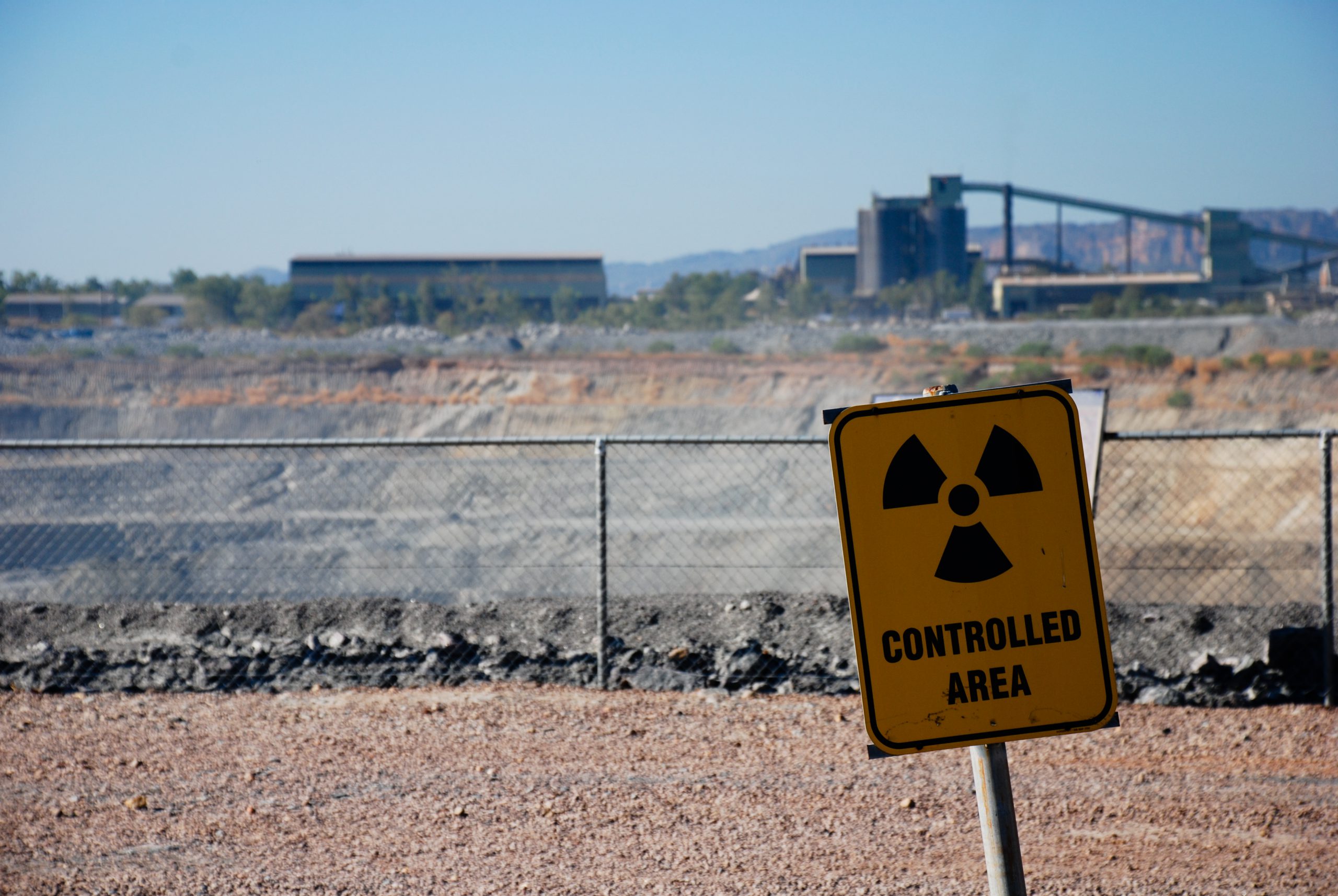
Uranium mining is still causing problems in the US. This was the topic of Radio Active Magazine on KKFI, 90.1 FM Community Radio, on Feb. 9. Activists from the Multicultural Alliance for a Safe Environment (MASE), based in Albuquerque, NM, joined PeaceWorks-KC leaders for the program.
The MASE activists on the program were Anna Benally, a former uranium mine employee turned activist who is working to heal the land and protect the health of people and livestock, and Susan Gordon, coordinator of MASE. PeaceWorks Board members Ann Suellentrop and myself introduced the MASE leaders and interviewed them. The podcast is online at https://kkfi.org/program-episodes/fighting-uranium-contamination-in-the-southwest/.
Atomic weapons plan risky for SC, lawyers say. Noted legal service joins fray
Savannah River Site Watch, Nuclear Watch New Mexico and Tri-Valley CARES recently retained the Environmental Law Project. They say pit factories are expensive, unnecessary, needlessly threaten the environment, and could leave unused plutonium stranded permanently in places like SRS.
BY: SAMMY FRETWELL | thestate.com FEBRUARY 12, 2021
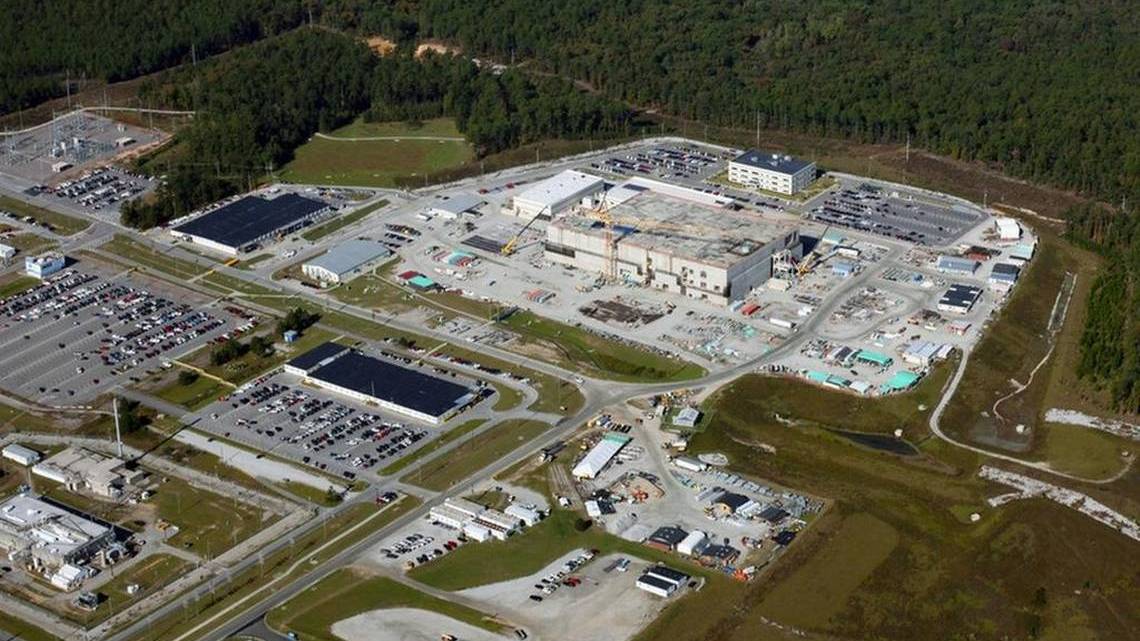
A South Carolina legal service has joined the fight against an atomic weapons components factory at the Savannah River Site, raising the possibility that environmental groups will sue the federal government to stop the effort.
The South Carolina Environmental Law Project, a non-profit service with an extensive record of arguing cases in court, outlined concerns about the factory in a letter this week to the U.S. Department of Energy. The letter called the proposed factory risky and in need of further study.
At issue is a proposal to build a nuclear weapons pit plant that would use plutonium, a deadly long-lived radioactive material, at the Savannah River Site.
The pit factory would produce potentially thousands of jobs, but is drawing opposition from environmental groups in South Carolina, New Mexico and California.
In Santa Fe, protesting LANL’s arrival
Luis Sánchez Saturno / The New Mexican Feb 12, 2021
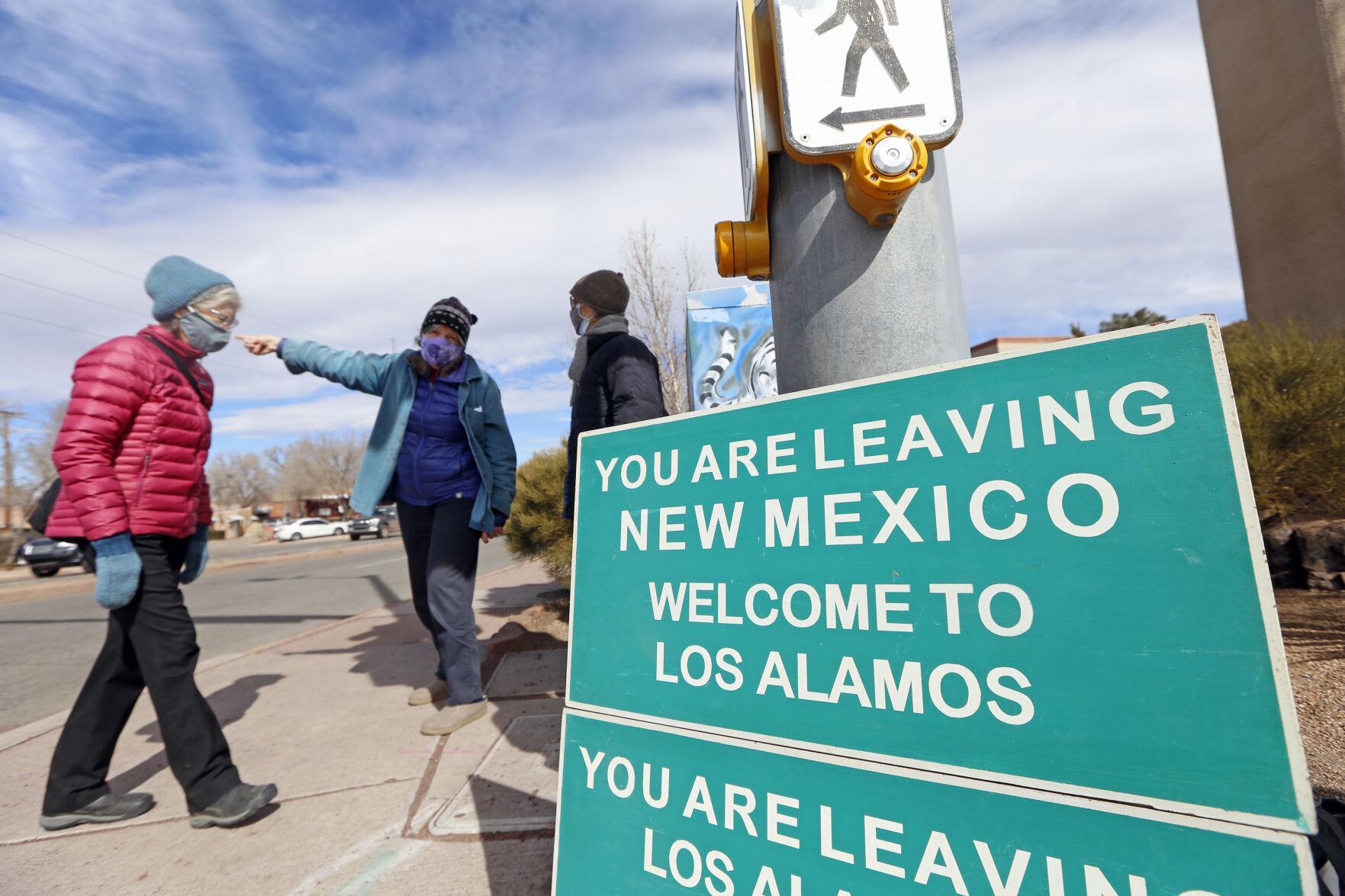
Los Alamos lab, birthplace of the atomic bomb, STILL under threat from wildfires despite repeated major incidents
“The threat and risks of wildfire to the lab and northern New Mexico will continue to increase because of climate warming, drought and expanded nuclear weapons production,” said Jay Coghlan, director of the group Nuclear Watch New Mexico.
A recent audit by the US Energy Department’s inspector general found that threat-reduction measures such as the maintenance of the lab’s network of fire roads, strategic clearing of vegetation in the surrounding area as well as the production of a coherent preparedness and mitigation plan had not been carried out
Photographic evidence included in the report indicated a tree density of 400 to 500 per acre, 10 times the recommended safe level of 40 to 50 trees per acre.
Audit Raises Concerns About Wildfire Risks at US Nuclear Lab
“The threat and risks of wildfire to the lab and northern New Mexico will continue to increase because of climate warming, drought and expanded nuclear weapons production,” said Jay Coghlan, director of the group Nuclear Watch New Mexico.
BY: SUSAN MONTOYA BRYAN | wokv.com February 10, 2021
ALBUQUERQUE, N.M. — (AP) — One of the nation’s premier nuclear laboratories isn’t taking the necessary precautions to guard against wildfires, according to an audit by the U.S. Energy Department’s inspector general.
The report comes as wildfire risks intensify across the drought-stricken U.S. West. Climatologists and environmentalists have been warning about worsening conditions across the region, particularly in New Mexico, which is home to Los Alamos National Laboratory and where summer rains failed to materialize last year and winter precipitation has been spotty at best.
The birthplace of the atomic bomb, Los Alamos has experienced hundreds of millions of dollars in losses and damage from major wildfires over the last two decades. That includes a blaze in 2000 that forced the lab to close for about two weeks, ruined scientific projects, destroyed a portion of the town and threatened tens of thousands of barrels of radioactive waste stored on lab property.
Watchdog groups say the federal government needs to take note of the latest findings and conduct a comprehensive review before the lab ramps up production of key plutonium parts used in the nation’s nuclear arsenal.
Los Alamos Nuclear Weapons Lab Opens Office in the City of the Santa Fe (“Holy Faith”) of Peace and Environmental Protection
FEBRUARY 10, 2021
Santa Fe, NM – A Lab press release has announced that “[c]onnections between Los Alamos National Laboratory and the City of Santa Fe will be strengthened with the Laboratory’s opening of a new downtown office” after signing a 10-year lease on a 28,000-square-foot building. The Lab’s press release ignores LANL’s $2.9 billion nuclear weapons production budget (up 33% in one year), its proposed 46% cut to cleanup to $120 million, serious groundwater contamination and recent reports how it has neglected wildfire protection. Two catastrophic wildfires in the last 21 years on or near the Lab blanketed a large portion of northern New Mexico with possibly contaminated smoke.
The City of Santa Fe’s official name is the “La Villa Real de la Santa Fe de San Francisco de Asís” (“The Royal Town of the Holy Faith of Saint Francis of Assisi”), in honor of the beloved saint who preached peace and environmental protection and from whom the present Pope draws his name. Pope Francis has repeatedly called for the abolition of nuclear weapons and while in Japan paid homage to the victims of the Hiroshima and Nagasaki bombings. Those atomic bombs were designed and produced at the Los Alamos Lab.
LANL not serious about wildland fires
BY: T.S. Last / Journal North Copyright © 2021 Albuquerque Journal Feb, 9, 2021
SANTA FE – A recently released report by the Department of Energy’s Office of Inspector General suggests that managers at Los Alamos National Laboratory did not take wildland fire prevention seriously enough, despite two catastrophic wildland fires in the past 20 years that threatened the lab and the town, costing taxpayers millions of dollars.
“Our review found that activities designed to reduce the impact from wildland fire had not been fully implemented at Los Alamos National Laboratory (LANL) in accordance with site plans,” says the opening sentence of a 14-page memo from the Inspector General’s office dated Feb. 1.
What’s worse, the report says, some plans were never drafted, and some policies put into place after the Cerro Grande Fire in 2000 and the Las Conchas Fire in 2011 were not being followed.
It adds that lab managers haven’t developed a “comprehensive risk-based approach to wildland fire management,” as required by the Federal Wildland Fire Management Policy. The report also describes a “lack of formality.”
“Specifically, the contractor’s Wildland Fire Plan lacked requirements for documenting wildland fire management activities, and responsibilities for implementation were not well defined,” the report says.
The contractor referred to is Triad National Security LLC, which in November 2019 took over management of the lab, which is tasked with developing and manufacturing parts for nuclear weapons. Previously, Los Alamos National Security LLC had held the management contract since 2006.
It appears evident that some of the problems identified in the report predate Triad’s involvement.
The report says that there are about 2,000 structures, including 13 nuclear facilities, with an estimated value of $14.2 billion on approximately 23,000 acres of lab property.
It notes that the 2000 Cerro Grande Fire, which burned 43,000 acres, including about 7,500 acres of LANL property, resulting in $331 million in damage to the lab alone. That does not include an estimated $15 million in lost productivity per week during a 15-day shutdown and recovery period.
The Cerro Grande Fire was a “crown fire” that burned through the tree canopy and spread quickly, and the report has an entire section on mitigation of crown fires.
Despite recognition of the risk, mitigation measures to reduce the risk of crown fires had not been performed.
LANL Falls Behind on Wildfire Protection While Expanding Nuclear Weapons Production Watchdog Calls for New Site-Wide Environmental Impact Statement
FEBRUARY 9, 2021
Santa Fe, NM – The Department of Energy’s Inspector General is reporting that the Los Alamos National Laboratory (LANL) is falling seriously behind in wildfire protection. This is despite the fact that the 2000 Cerro Grande Fire forced the mandatory evacuation of both LANL and the Los Alamos townsite, burned 3,500 acres of Lab property and came within a half-mile of Area G, its largest waste dump. At the time Area G stored above ground some 40,000 barrels of plutonium-contaminated radioactive wastes. It could have been catastrophic had they burst and sent respirable airborne plutonium across northern New Mexico (inhaled plutonium is a very serious carcinogen).
In 2011 the Los Conchas Fire raced 13 miles in 24 hours to the Lab’s western boundary, where it was stopped along State Highway 4. Both it and the Cerro Grande Fire sent huge plumes of harmful smoke across northern New Mexico, possibly carrying Lab contaminants as well (operation of radioactive air emissions monitoring equipment was suspended during the Cerro Grande Fire).
Report: LANL not managing forests to prevent wildfires
Jay Coghlan, executive director of the nonprofit Nuclear Watch New Mexico, said the lab puts most of its attention on producing nuclear weapons and neglects forest maintenance, despite the disastrous Cerro Grande Fire that destroyed dozens of its structures.
“Nuclear weapons above all,” Coghlan said.”
By Scott Wyland swyland@sfnewmexican.com / sfnewmexican.com Feb 9, 2021
Los Alamos National Laboratory has failed to properly manage its forested lands, increasing the threat of wildfires at lab sites and surrounding areas, according to a federal watchdog.
The lab has not thinned trees or cleared forest debris from many wooded areas, nor has it maintained service roads to ensure safe passage for firefighting crews, boosting the potential for “devastating wildfires” like the Cerro Grande Fire in 2000, the U.S. Energy Department’s inspector general said in a strongly worded report released this week.
The report criticized the lab’s main contractor, Triad National Security LLC, for not following fire management plans and not documenting required yearly activities to prepare for and prevent possible wildfires at the site.
“Our review found that activities designed to reduce the impact from wildland fire had not been fully implemented at the Los Alamos National Laboratory in accordance with site plans,” the report said.
The report comes as the federal Drought Monitor shows Los Alamos County and much of the state as being in exceptional drought — the most severe condition — which raises the risks of wildfires.
Jay Coghlan from Nukewatch New Mexico and Kevin Kamps from Beyond Nuclear discuss the recent developments in Nuclear Weapons proliferation and the new international ban on nuclear weapons.
Living on the Edge also cover reasons why nuclear power may not be the low carbon panacea for transitioning our electric grid that is so widely promoted these days.
Plan to send diluted plutonium to Waste Isolation Pilot Plant moves forward
A plan to dispose of surplus plutonium at the Waste Isolation Pilot Plant through a dilution process that would reduce the waste to radiation levels allowable at the facility moved forward at the end of 2020 and the process was expected to continue through 2022.
By: Adrian Hedden | currentargus.com February 8, 2021
The National Nuclear Security Administration (NNSA) – an arm of the U.S. Department of Energy – announced in December its intention to draft an environmental impact statement on the project and a public comment scoping was extended until Feb. 18.
Comments on the project can be made to the NNSA via email to SPDP-EIS@NNSA.DOE.GOV with the subject line SPDP EIS Scoping Comment.
The EIS will study the scope of the project and its potential impacts on the environment and DOE operations at numerous sites involved in the storage, down-blending and final disposal of the plutonium.
Radiation Illnesses and COVID-19 in the Navajo Nation
“In Indigenous lands where nuclear weapons testing took place during the Cold War and the legacy of uranium mining persists, Indigenous people are suffering from a double whammy of long-term illnesses from radiation exposure and the COVID-19 pandemic.”
By: Jayita Sarkar, Caitlin Meyer | thebulletin.org February 3, 2021
The COVID-19 pandemic is wiping out Indigenous elders and with them the cultural identity of Indigenous communities in the United States. But on lands that sprawl across a vast area of the American West, the Navajo (or Diné) are dealing not just with the pandemic, but also with another, related public health crisis. The US Centers for Disease Control and Prevention says COVID-19 is killing Native Americans at nearly three times the rate of whites, and on the Navajo Nation itself, about 30,000 people have tested positive for the coronavirus and roughly 1,000 have died. But among the Diné, the coronavirus is also spreading through a population that decades of unsafe uranium mining and contaminated groundwater has left sick and vulnerable.
The Future of War in Biden’s America
Danny Sjursen offers a Bidenesque tour of U.S. militarism.
By: Danny Sjursen Tom’s Dispatch | consortiumnews.com
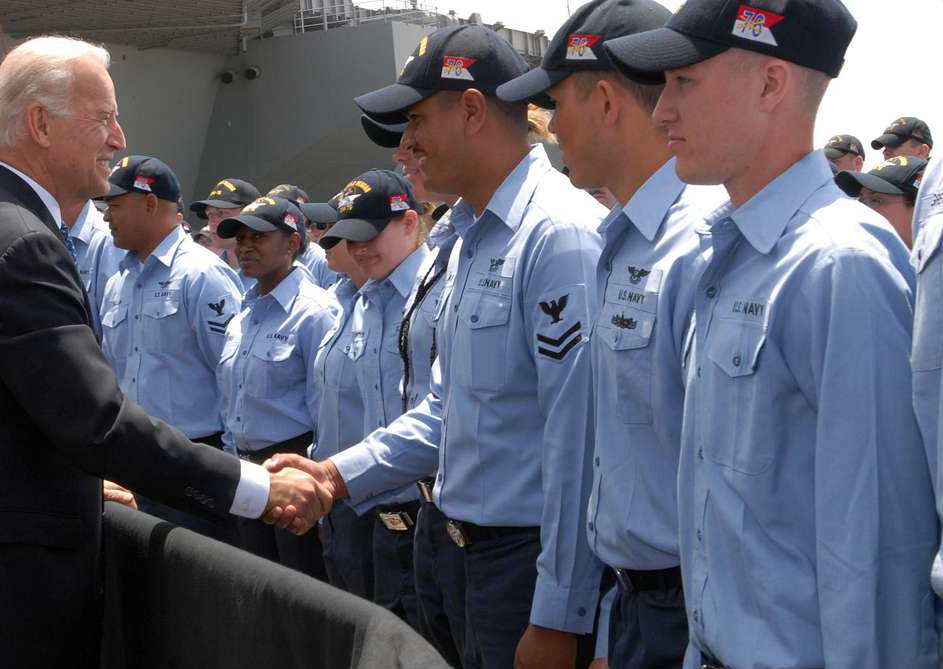
Hard as it is to believe in this time of record pandemic deaths, insurrection, and an unprecedented encore impeachment, Joe Biden is now officially at the helm of the U.S. war machine. He is, in other words, the fourth president to oversee America’s unending and unsuccessful post-9/11 military campaigns.
In terms of active U.S. combat, that’s only happened once before, in the Philippines, America’s second-longest (if often forgotten) overseas combat campaign.
Yet that conflict was limited to a single Pacific archipelago. Biden inherits a global war — and burgeoning new Cold War — spanning four continents and a military mired in active operations in dozens of countries, combat in some 14 of them, and bombing in at least seven.
Nukes aren’t just for bombers and subs. Here are some unusual ways militaries have also planned to drop the bomb
Throughout the Cold War, the prospect of bombers dropping nuclear bombs and submarines launching nuclear-tipped missiles terrified people around the world. Those were the major delivery methods, but both militaries developed an array of smaller nuclear weapons for tactical use, and planners in those militaries gave very real consideration to using them.
By: Benjamin Brimelow | businessinsider.com Jan 28, 2021
The Special Atomic Demolition Munition (SADM) was small enough to fit into a large backpack but still had a yield of a kiloton. It was intended to be planted by small, specially trained teams that would set a time fuse before attempting to escape.
You can actually view these asinine “backpack nukes” at the National Museum of Nuclear Science & History in Albuquerque. These “small” weapons, many of them more powerful than the nuclear bomb dropped on Hiroshima, would have obliterated any battlefield and irradiated much of the surrounding area.
The Little Boy (15 kilotons) and Fat Man (21 kilotons) atomic bombs dropped on Hiroshima and Nagasaki, respectively, remain the only nuclear weapons used in combat.
Those bombs destroyed the cities, killed or wounded hundreds of thousands of people, and left thousands more with long-term health problems. The carnage and destruction are the first things that come to mind when discussing nuclear weapons.
But nukes weren’t just for destroying cities. Early in the Cold War, the tactical use of nuclear weapons on the battlefield was not only researched extensively but actually considered.
Nuclear News Archives – 2021
Nothing Found
It seems we can’t find what you’re looking for. Perhaps searching can help.
Nuclear News Archives – 2020
Nothing Found
It seems we can’t find what you’re looking for. Perhaps searching can help.
Nuclear News Archives – 2019
Nothing Found
It seems we can’t find what you’re looking for. Perhaps searching can help.
Nuclear News Archives – 2018
Nothing Found
It seems we can’t find what you’re looking for. Perhaps searching can help.


